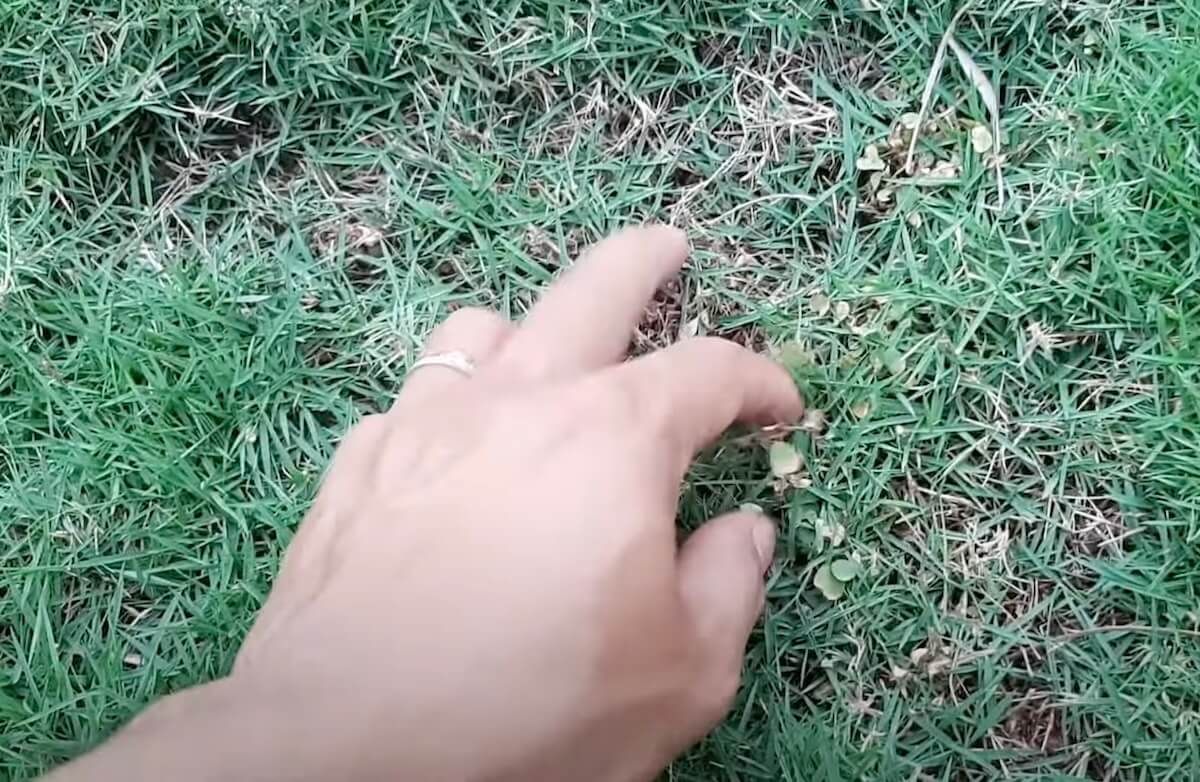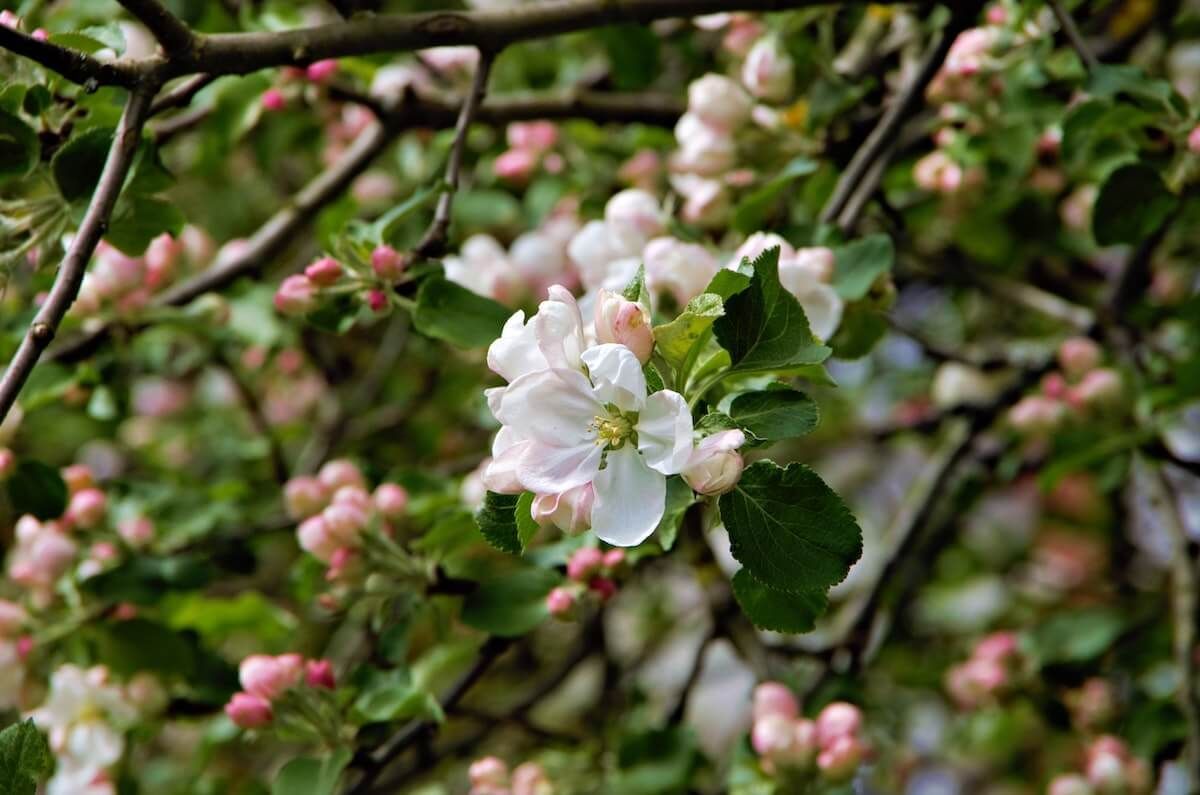The Complete Mulch Guide
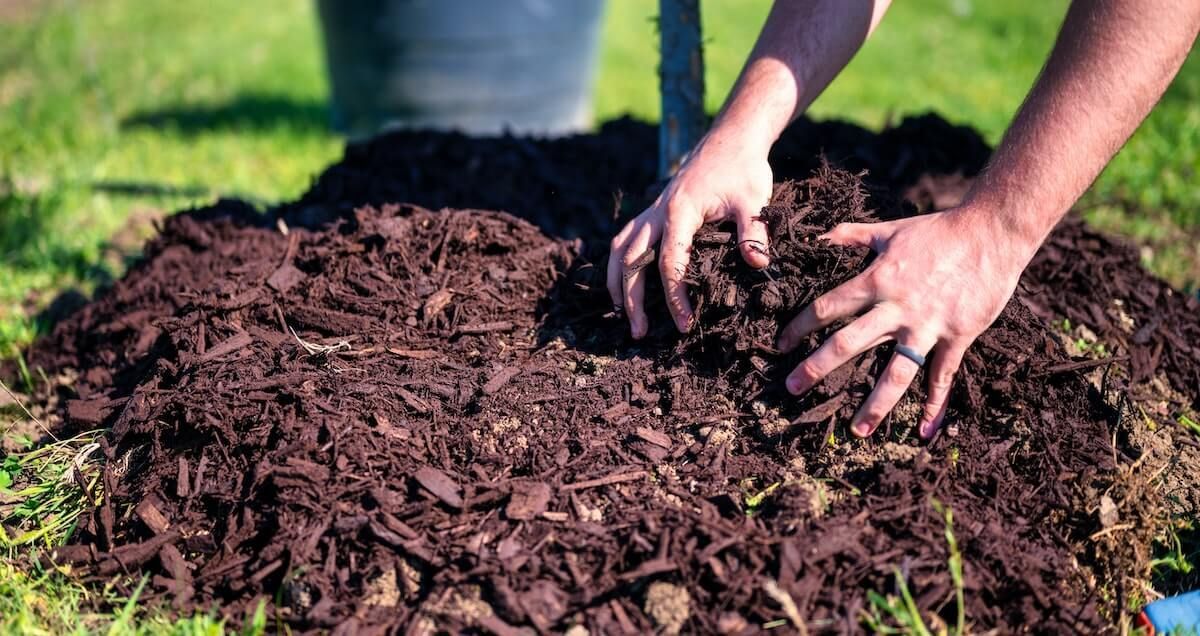
The Wonders of Mulch. Mulch, mulch, mulch - so what's the big deal about it anyway?
You've heard it again and again - mulch for weed control, mulch for water retention, mulch to keep roots warm in the winter and cool in the summer.
That's all fine and dandy, but how does one choose the correct mulch for all the different gardening situations that arise throughout the year?
Well, that's why we are going to go over each type of mulch that is available, what each mulch's strong and weak points are, and which mulch does best for certain gardening situations.
By the end of this article, you'll have a very clear idea about which mulch you can use, and how to use it. I guarantee that once you get the hang of using mulch, you'll be extolling its virtues along with the rest of us!
Overview
Our brief overview will go over why mulch is so important to plant and soil health, how to properly mulch in the summer as opposed to the winter, some problems to avoid, and how to deal with weeding and mulching. First, let's take a quick look at what you can accomplish when using mulch:
- Suppress weeds
- Keep soil warm in the winter and cool in the summer
- Conserve moisture - allows for deep and infrequent watering
- Support and encourage numerous beneficial organisms, such as earthworms, that make soil healthy
- Eliminate stress in shallow-rooted plants
- Provide nutrients to the soil and to plants
- Improve soil structure and drainage
- Can provide aesthetically pleasing and beneficial effects, such as when you use fine bark in a bed of landscape shrubs
The ideal mulch is:
- Economical
- Readily available
- Easy to apply and remove
- Stays in place
- Supplies organic matter to the soil
- Is free of noxious weeds, insects, and diseases
Overall, the healthiest plants, are those that have access to a consistent supply of water and nutrients, and mulch helps with this.
As it breaks down, and when watered or rained on, mulch provides nutrients to the roots, earthworms, and soil organisms.
This is why many plants have their feeding roots right under the soil surface, so they can easily grab the food as it becomes available to them.
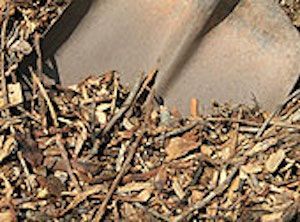
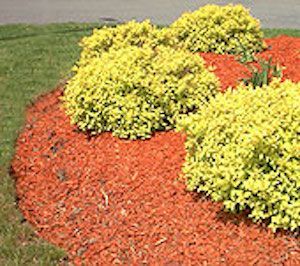
Weed Before You Mulch!
I know that's a bummer, but you will always have to remove perennial weeds like docks, dandelions, plantains, and grasses before you mulch. You can always solarize the soil first, or use other weed eradication methods, and then use your mulch.
Wind Can Work Against You
Now, one downside is that the war against weeds is never over, and while mulch helps a lot, nothing can prevent wind-borne seeds from germinating on top of a mulched area.
The really good news is that when you have a nice layer of mulch, it makes it much easier to get rid of small weed plants because a light stirring with a cultivator or hoe will kill them with little effort on your part.
You just have to keep an eye out, be diligent, and get the tiny weeds before they turn into giant weeds.
General Guidelines on How Thick To Apply
How thick you apply mulch depends on the size of its particles.
Thin, fine particles like compost or finely shredded bark are best laid only 2 inches (5.1 cm) to no more than 3 inches (7.6 cm) deep around most plants and trees. If you put down a thicker layer than that, you risk reducing oxygen to the roots.
If the particle size of your mulch is larger, like straw, pine needles, chunks of bark, or rock, they can be applied up to 4 inches (10 cm) deep.
The larger spaces between the chunks allow more air and light in, so you will need a thicker layer for effective weed control, water conservation, and protection from cold.
Warning: When applying any kind of mulch be careful to leave some space around the plant crown, or tree base. If you pile any kind of mulch up against the crown, you will rot the plant out and it will die.
So leave 1 to 2 inches (2.5 to 5.1 cm) of breathing room near the stem or base of the plant and you'll be just fine.
Summer Mulching
The goal during the warm to hot summer months with mulch is to help provide even moisture and cooler soil for the plant's roots.
Summer mulches can be left on and never removed since they will decay over the months while providing nutrients and improving the soil at the same time.
Example: Mulching tomatoes to provide even moisture and cool roots to avoid blossom end rot. In the fall tomatoes will be removed and the soil will be worked to get ready for the following spring. The mulch therefore is best when left in place to continue to improve soil structure and texture.
Example: Using a bark or pine straw mulch for landscape plants to help conserve water. The mulch is left in place year-round and reapplied when the mulch has started to break down and thin out.
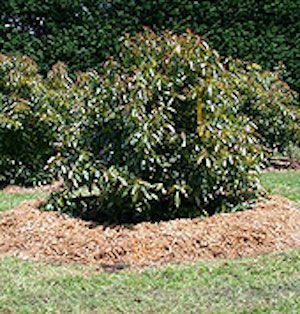
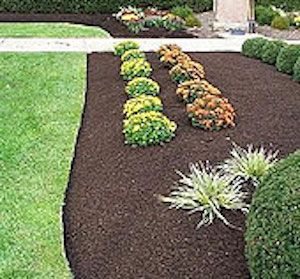
Winter Mulching
The goal during the cold and freezing fall and winter months is to help provide warmth and protect the plant and its roots from freezing.
Winter mulches are typically applied heavily in the fall and then removed in the spring when the weather warms up. Straw, shredded leaves, and pine needles are all effective winter mulches.
Example: Mulching roses or tender perennials to help them overwinter. In this situation, the crowns of the plants may need to be covered (an exception to the above warning), but since the plants are not actively growing and our goal is to keep the plant crown and roots from freezing this is temporarily OK.
In the spring, when the weather warms up and the plants start to actively grow again, remove the mulch as soon as possible, or rot and smothering of the plant can occur.
OK - so enough of the overview, let's look at different mulches and see what can be done with them.
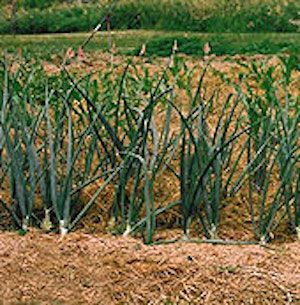
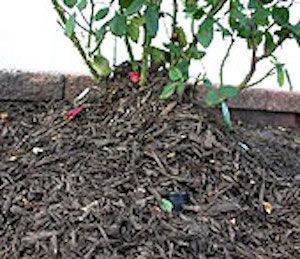
Avoid mulching too close to stems or trunks! Notice the light color on the buried trunk. The wood is starting to soften and rot.
Always leave 1 to 2 inches (2.5 to 5.1 cm) of breathing room around the stems or bases of plants and trees. The tree in this picture needs to have the mulch pulled away from the trunk. Once that's done, it should recover.
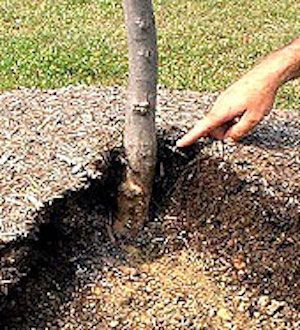
Leaf Mulch (Also called Leaf Mould)
Leaves that have been allowed to rot slowly for about one year.
Pros: Good for moisture retention. Not as good as compost, but will provide humus to help retain nutrients and improve soil structure.
Works best when used in conjunction with compost. Leaf mulch is rich in calcium and magnesium, which are great for healthy vegetables.
Cons: Make sure the leaves are fully composted. Simply putting chopped-up leaves around your plants will not be helpful.
How thick to apply: 2 inches (5.1 cm) to no more than 3 inches (7.6 cm) deep.
Best situations used: Great for sandy soils, all types of landscape situations, vegetable gardens, fruit trees, etc...

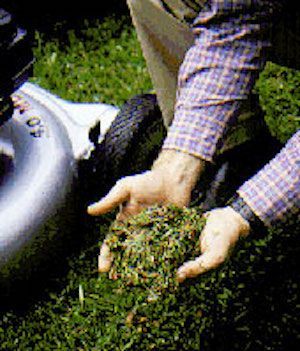
Grass Clippings
Grass clippings from a weed-free lawn make a great feeding mulch but use lightly. They are best when used mixed with other organic matter such as leaves.
Pros: High in nitrogen, but have little by way of fiber to improve soil structure. Can be combined with a rich carbon source such as leaves or untreated sawdust to provide the fiber needed to improve soil structure and form a more balanced food source. Used alone, they make a good feeding mulch.
Cons: If applied too thickly, grass clippings can decay into a slimy pulp, which can get very hot, and can burn plants.
How thick to apply: Best sprinkled lightly, no more than 1 inch (2 cm) thick directly onto beds from the lawn mower catcher.
Using lightly will prevent heat build-up, and the layers can be added gradually in successive weeks to form a nutritious mulch.
Best situations used: All types of landscape situations, vegetable gardens, fruit trees, etc.
Alfalfa (Lucerne) Hay or Pea Straw
Both are great nutritious mulches. Alfalfa (lucerne) hay and pea straw (dried pea stalks) are both legumes and, therefore high in nitrogen and trace minerals.
Pros: Both mulches offer minerals, trace elements, and other valuable nutrients that are stored in the plants and returned to the soil as they decompose. Plus when mixed into the soil, can improve soil structure. Neither seems to have the weed seed problems that straw has.
Cons: Can be expensive.
How thick to apply: Should be kept to a depth of 4 inches (10 cm) thick. This will settle down to about 2 inches (5 cm) which is still effective for both moisture retention and seed suppression. Will need to be reapplied as it decomposes.
Best situations used: Ideal for heavy feeders like roses and vegetable gardens, especially where their quick decay improves soil texture. Avoid using it in very windy areas.
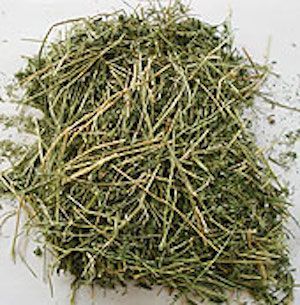
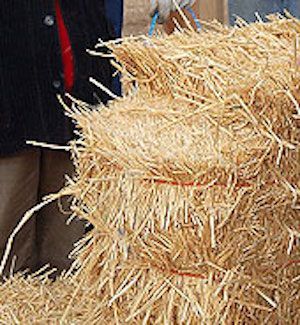
Straw
Hay is a dried grass like alfalfa, timothy, clover, etc. Straw is the stem left over after oats, wheat, barley, etc. are harvested and has little nutritional value. Hay can have seeds in it (like weed seeds), while straw is just the chaff, but can also harbor lots of weed seeds.
Pros: Very few. It is inexpensive. To keep the weeds down it works much better if you put down 5-7 layers of newspaper first, and then the straw.
Cons: Can be messy and if used as a winter mulch can attract mice, voles, and slugs. Can be full of weed seeds and often needs to decompose for a year before use to kill any weed seeds.
Also, ineffective on its own since it is mostly carbon. Because dry materials like straw, drain nitrogen from the soil to break the straw down, it should be mixed with grass clippings, manure, or compost to add nitrogen to minimize temporary nitrogen loss in the soil.
How thick to apply: Should be kept to a depth of 4 inches (10 cm) thick. This will settle down to about 2 inches (5 cm) which is still effective for both moisture retention and seed suppression. Will need to be reapplied as it decomposes.
Best situations used: Very few. Actually, we wouldn't recommend straw, but it can be used for winter mulch to keep tender roses and perennials warm. Avoid using it in very windy areas.
Bark & Wood Chips
Great for covering the soil. The advantage is that bark breaks down slowly and therefore doesn't need replenishing every year.
The large size of the bark chips allows water to run off and into the soil. Soil can be enriched by placing a layer of animal manure or compost before covering it with bark chips.
Wood chips are derived from many different hardwood and softwood species. They are often available from municipalities or utility companies involved in pruning or clearing trees.
Pros: Good for mature plants. Decorative, helps with moisture retention. Comes in many different sizes, shapes, and colors that can be incorporated into your landscape.
Cons: Not good for young plants or perennial beds. If used in these situations it is best to add a layer of compost first, then add the decorative cover of bark.
Bark will gradually break down and need to be reapplied every three years or so. Also, ask the bark supplier because some bark and wood products contain substances that inhibit plant growth, and should be left for several months in the weather to leach out toxins prior to using as a mulch.
Bark and wood chips can develop nitrogen deficiency in plants, causing them to turn yellow. This is caused by bacteria taking nitrogen out of the soil to break down the organic matter.
If using these types of mulches it is important to add nitrogen fertilizer, or a layer of animal manure or compost to the soil first to offset the problem, and then apply the bark.
Compared with bark mulches, wood chips tend to lose more of their decorative appearance over time, weathering to a gray or silvery gray color.
Mulch needs to be renewed every 2 to 3 years. Churn up the existing mulch before adding a light renewal layer.
How thick to apply: Depending upon what size of bark is used, it can be applied 2 inches (5 cm) to 4 inches (10 cm) deep.
Best situations used: Established landscaped areas such as shrub beds or around trees.
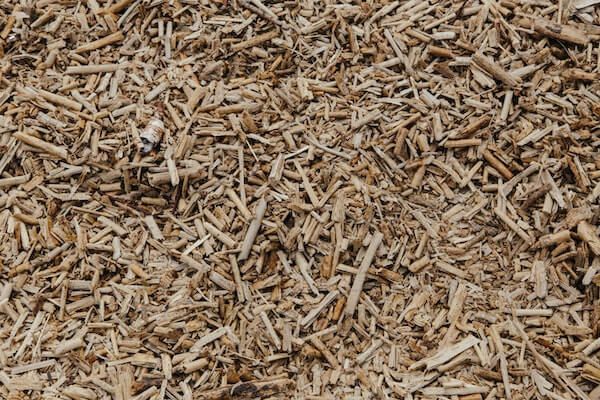
Black Plastic Vs. Landscape Fabric
Black plastic has been replaced with landscape fabrics over the years for good reason. Heavy black plastic that is laid down first, with mulch then added on top, sets up all kinds of problems.
While it gave good weed suppression, the soil, starved for oxygen and light, became sour and caused root die-back.
Plus, the slippery surface of black plastic caused the mulch to slide off showing the ugly black surface that was then broken down by sunlight and elements. Once the plastic fell apart and shredded, the weeds took over.
Landscape fabric is better than plastic because it lets air and moisture through. If using an irrigation system it is best to have drip irrigation under the weedmat.
Pros:
Black plastic: None.
Landscape Fabric: Let air and water through. Good weed suppression.
Cons: Neither add or allow nutrients into the soil to improve soil structure or health. Although landscape fabrics are a great advance in mulching technology, they don't prevent all weed growth. Weeds that germinate and grow in a bark or wood chip top mulch can grow right through the fabric.
How thick to apply: Comes in different thicknesses. Simply roll out to cover the soil.
Best situations used: Temporary use for soil solarization. Temporary use to keep the soil warm in the spring for certain heat-loving crops until the weather can warm the soil. Some landscaped areas.
Sawdust
Fresh sawdust right off the saw can be very acidic depending on the type of wood being used. A good rule of thumb for fresh sawdust is to pile it where it will be undisturbed for one year.
The rains and natural decomposition will leach out most of the acid and then it can be used for mulch the next few years.
Pros: Sawdust is often recommended as a mulch for blueberries, rhododendrons, and other acid-loving evergreens. Sawdust mulch has an acidifying effect on the soil as it decomposes.
Cons: Decomposing may temporarily reduce the supply of soil nitrogen for plant uptake. You can compensate for this loss by adding grass clippings or compost to minimize temporary nitrogen loss in soils.
Ineffective on its own since it is mostly carbon. Works best when used in conjunction with compost or grass clippings to form a more balanced food source.
How thick to apply: 2 inches (5.1 cm) to no more than 3 inches (7.6 cm) deep.
Best situations used: Acid-loving plants.

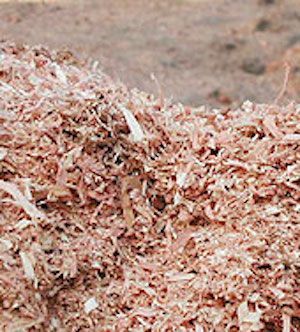
Gorilla Hair / Coconut Fiber
Shredded ground redwood bark from recycled redwood.
Pros: Fibrous, coarse-textured product helps reduce weed growth and produces an aesthetically pleasant finish to the landscape over a long period of time.
Stays put, even in high winds. Maintains appearance and does not fade as quickly as cheaper mulches. It best for long-term soil conditioning provides better air circulation and increases soil acidity as it gradually decomposes.
Cons: If applied too thickly, it can inhibit water from getting down to the soil. Since it is mostly carbon, it would be best to put a layer of compost down first, then the gorilla hair.
How thick to apply: 2 inches (5.1 cm) to no more than 3 inches (7.6 cm) deep.
Best situations used: Landscaped situations, trees, shrubs, planters, annual or perennial beds.
Compost
Compost is simply well-rotted organic matter that enriches the soil, improves its structure and drainage, and provides plants with nutrients that promote strong, healthy growth for abundant flowers, fruits, and vegetables.
Pros: Filled with organic material, minerals, beneficial micro-organisms, as well as trace elements. It is a great fertilizer and soil conditioner.
Compost is the best mulch you can use as it has plenty of nutrients, good evaporation control, and quickly improves soil texture and water-holding capabilities. It is also a great worm encourager, and it is easy to make your own.
Cons: None
How thick to apply: 2 inches (5.1 cm) to no more than 3 inches (7.6 cm) deep.
Best situations used: All
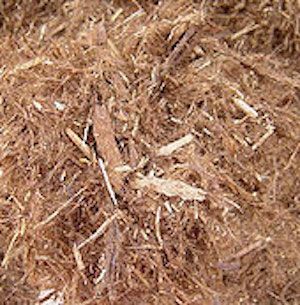
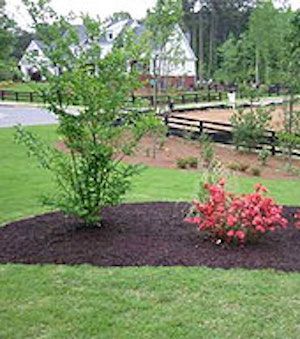
Newspaper
Newspapers covered with a mulch of leaves mixed with compost or fresh grass clippings. Paper should be no more than two to three layers thick and have holes punched in it to allow water through. It is best to wet the paper before laying it.
Pros: Weed-discouraging, moisture-conserving, and the newspaper decomposes on its own in a few months posing no problem for rototilling or digging.
Mulching with newspapers takes far less time than would be spent in hoeing or tilling a garden for weed control, and only needs slightly more time than applying any of the more common mulches.
Cons: Ineffective on its own since it is mostly carbon. Works best when used in conjunction with a thick layer of leaves mixed with compost or fresh grass clippings to form a more balanced food source and to minimize temporary nitrogen loss in soils. Don't apply too thickly or water can't get to the soil and the paper won't decompose properly.
How thick to apply: Spread no more than two to three sheet layers of wet newspaper over the soil leaving three-inch (7.6 cm) spaces around plants or seedlings.
Make sure some holes are punched in the paper to allow water through. After that, spread 2 to 3 inches (5 to 7.6 cm) of leaves, grass, or compost over the paper.
Best situations used: Any including vegetable gardens, annual and perennial beds, and established landscapes.
Pine Straw
Pine needles have a pleasing appearance and acidify the soil around acid-loving plants.
Pros: Pine needles decompose slowly, are resistant to compaction, and are easy to work with. They provide excellent protection around newly set or tender ornamental plants.
Cons: If left on year-round, pine needles should be renewed annually. There have been concerns raised about the effects of soil erosion and runoff in watersheds where pine straw is harvested.
Research was conducted to determine whether such concerns are justified, and evaluate harvesting practices to minimize any problems found.
This study showed that pine straw harvesting did increase runoff, soil erosion, and some nutrient losses; but these effects were decreased by less-frequent harvesting schedules.
How thick to apply: 2 inches (5.1 cm) to no more than 3 inches (7.6 cm) deep.
Best situations used: Acid-loving plants, and landscaped situations such as shrub beds or around trees.
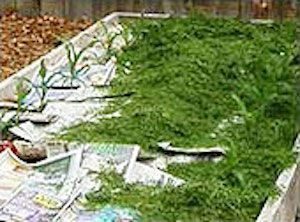
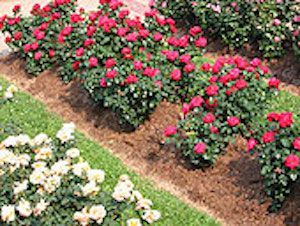
Rubber Mulch
Made from recycled rubber and tires.
Pros: Good for permanent walkways, driveways, or playgrounds. Make sure it is made from recycled materials first. Comes in many colors. Keeps old tires out of landfills.
Cons: Not too long ago using used tires in the garden was discouraged because of the possibility of heavy metals leaching into the soil. Rubber also can not contribute beneficial organic matter to the soil, which in gardening is critical.
How thick to apply: Depending upon what size of rubber used, it can be applied 2 inches (5 cm) to 4 inches (10 cm) deep.
Best situations used: Driveways, playgrounds, and walkways. Not recommended around plant material.
Pebbles / Gravel / Volcanic Rock
Stones and gravel, are good for arid plants.
Pros: Good long-lasting mulch material, especially for storing heat through the day and releasing warmth at night, which is great for frosty areas.
They are not blown about by wind, they don't harbor weed seeds or diseases, and they don't rob the soil of nitrogen.
Can be fine-textured or coarse. Some mineral mulches can be colored to blend in with the features of the home, patio, or landscape.
Cons: Mineral mulch particles can work free of beds and be thrown by rotary lawnmowers, potentially causing injury.
Unless underlaid with a synthetic fabric or plastic mulch, they migrate down in soils over time. Limestone chips raise the pH of the soil and thus should not be used around acid-loving plants.
Try to avoid using unsustainable materials, and choose by-products or recycled materials like crushed bricks. Does not contribute beneficial organic matter to the soil, which in gardening is critical.
How thick to apply: Depending upon what size of stone is used, it can be applied 2 inches (5 cm) to 4 inches (10 cm) deep.
Best situations used: Crushed stone and gravel are great for rock gardens. shrub beds, driveways, walkways, and insteps.
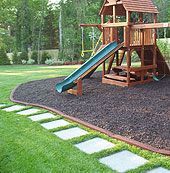
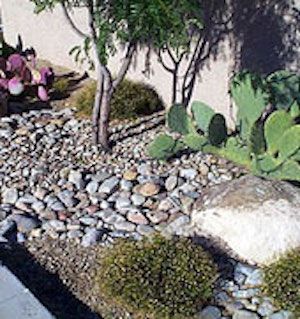
Conclusion
If you read through all that, you now have a superior knowledge of mulch. You know how to use each one, and which will benefit you most in your particular gardening situations.
It's too bad we can't give you a "Certificate of Mulch-ology" because you are now a lay expert on the subject!
You will now have plants that are healthier, vegetable plants that produce better, fruit trees that produce juicier fruit, a lower water bill, and no aching back from having to weed as much as you have had to in the past. Not a bad trade-off for spreading some compost around.
Mulch can truly make magic happen in the garden, plus it's inexpensive, and there are numerous sources of the stuff no matter where you live.
So no more excuses - start mulching!





